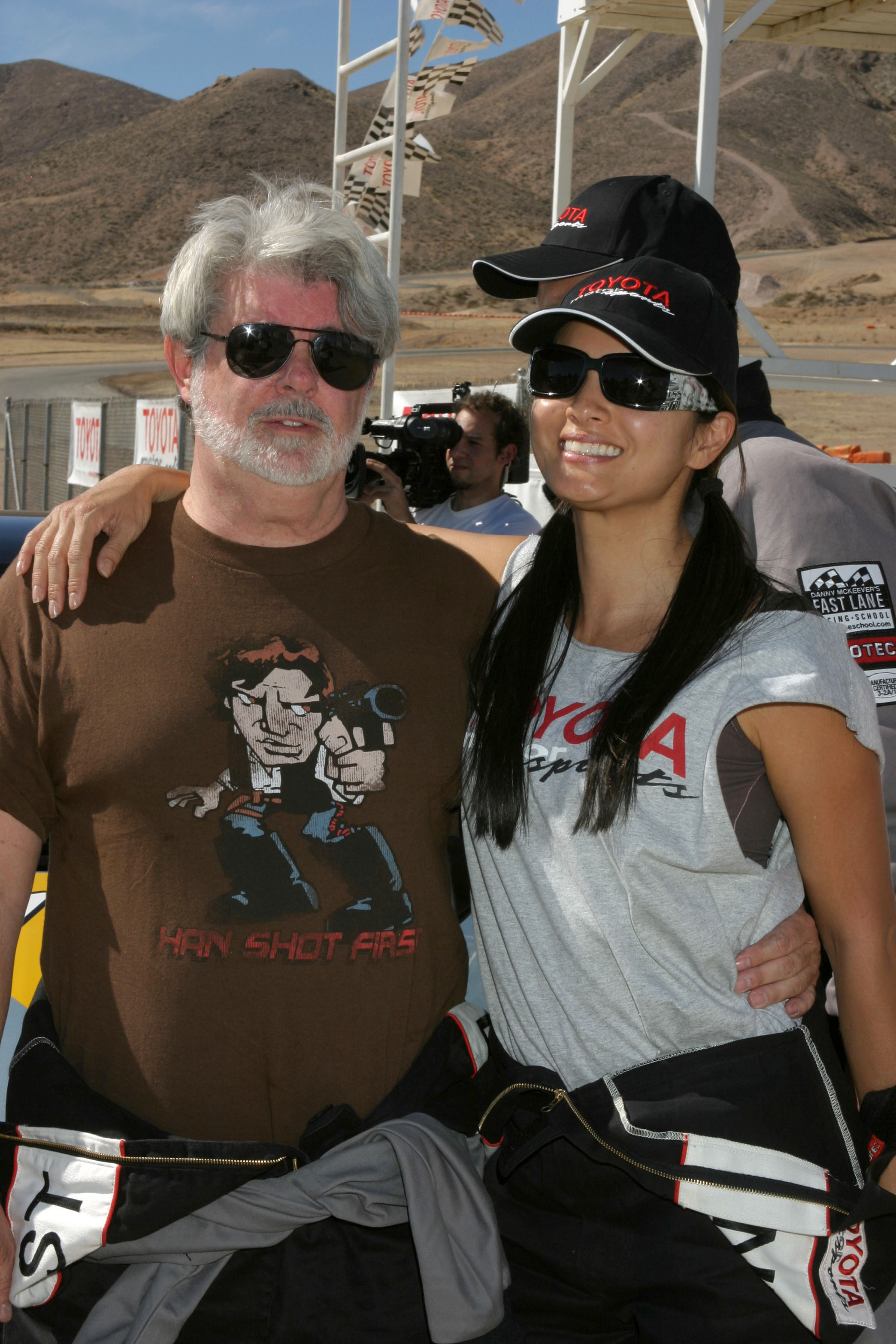
According to established lore, the STAR WARS saga came to creator George Lucas pre-formed. The story –- about a brother and sister battling to save their father from the wicked path he’d blazed for himself –- was far too big to tell given the meager resources allotted. Hedging his bets, Lucas divided his story into three acts and turned the first third into its own feature film, with the intent to return to subsequent episodes if that initial installment -- STAR WARS –- was a success. The rest, as they say, is history.
Or is it? This backstory has been retold in numerous books and documentaries since 1977; and yet it, like the STAR WARS series itself, is in constant flux, revealing itself to be embellished and improvised based on the needs of the creator at a given time. Yet despite documentation that suggests, or even verifies, the malleable nature of STAR WARS’s development, there is a loyal pocket of fans whose devotion to the franchise seems to be in many ways enhanced by the notion of a grand scheme laboriously executed over a series of decades. For others, the fact that the story continues to change renders Lucas an unreliable narrator, causing the disappointment over the Prequels to take on a far more serious quality. The question becomes: how important is it that Lucas did or didn’t have the STAR WARS saga planned from the beginning; and how important is it that Lucas is constantly rewriting history regardless of whether or not listeners believe it…?
It would require a book to lay out the many different iterations of the STAR WARS story (and several have been written, such as the exhaustive volumes on each film by J.W. Rinzler, and Chris Taylor’s HOW STAR WARS CONQUERED THE UNIVERSE); but in the interest of brevity, let’s limit this to broad strokes.
Anyone who has taken the time to explore the early drafts of THE STAR WARS –- the original title for “Chapter One” of what was tentatively titled THE ADVENTURES OF LUKE STARKILLER -– will recognize very little of what would ultimately follow. The story changed dramatically from draft to draft. In one version, it was about a pair of male twins; in the next, a male lead; in the next, a female lead; sometimes young, sometimes old, sometimes human and sometimes alien. All the familiar iconography had yet to be established, right down to the central tenants of the Force (which, PHANTOM MENACE supporters will be happy to know, had its roots in science more than the later mysticism). If anything, the first few versions of THE STAR WARS owed more to DUNE than to the space fantasy tropes it would later sire. One thing is for certain, though: at no point was there a script containing the entirety of the STAR WARS trilogy as we know it, rendering the claims of expansion of the first third to be, at best, suspect.
The screenplay for STAR WARS that we all know wasn’t even necessarily what was filmed in 1976; given the unavailability of the fabled disastrous first cut of the movie, the closest representation we have is Alan Dean Foster’s belabored novelization, which is essentially STAR WARS minus the syrup. It’s talky, dry, and very slow, lacking the warmth and humanity that was later added by the performers, as well as the criminally unrecognized efforts of editors Richard Chew and Marcia Lucas, and dialogue polishers Willard Huyck and Gloria Katz. The STAR WARS that became a phenomenon in 1977 was smoothed and massaged to become what it is; the film Lucas set out to make lacked most of the qualities with which we associate the franchise.
With the success of the movie, Lucas began doling out nuggets of information to the press, most notably informing them that STAR WARS was part of a twelve-episode series (!) of which the film we’d all seen was the fourth installment. The entirety of the narrative, derived Tolkien-like from the galactic “Journal of the Whills,” was supposedly laid out in a series of notebooks. However, when originally planning THE EMPIRE STRIKES BACK, the sequel was commonly referred to as “Chapter Two” (which was also reflected in the business title), and the script, derived from George Lucas’s proposed story by esteemed sci-fi author Leigh Brackett, bears little in common with the eventual film. There’s no revelation of Darth Vader’s parentage –- in fact, while training on Dagobah, Luke takes instruction from the ghost of his unnamed father! Han is never frozen (which was written in to plan ahead for Harrison Ford’s ambivalent nature over returning for a third film), and he even takes off in search of his father, an Old Republic soldier, during the closing scene. Lando, it turns out, is from a planet of clones who fought during the fabled Clone War; Leia develops strong romantic feelings for Luke; and the duel with Vader takes place in a trippy, Kubrickian psychedelic space sequence. The “saga” elements had yet to rear their head until rewrites.
Brackett’s script was written at the same time that Alan Dean Foster’s book, SPLINTER OF THE MIND’S EYE, was published, with the intentionally minimalist story designed to serve as a low budget sequel to STAR WARS if funds weren’t available. In the book, Luke confronts Vader, and their conflict is left unresolved; but at no point is there any indication that the Dark Lord is Anakin Skywalker, nor is Leia portrayed as Luke’s sister. In fact, the romance between the two is ramped up significantly.
The claim that STAR WARS would be told over twelve installments was altered abruptly with the release of RETURN OF THE JEDI. According to Lucas, he had never said “twelve” (he blamed this on journalists, stating he in fact planned only nine), and the proposed story elements that would supposedly carry the saga through the next several films were condensed into one concluding act. JEDI was largely conceived during story conferences between Lucas, director Richard Marquand, and writer Larry Kasdan, the latter of whom pressed for a bittersweet finale. The original concept involved an assault on the Imperial planet of Had Abaddon before being altered to include two Death Stars; eventually, the planet would be dropped and a single Death Star became the focus. The “other” of whom Yoda spoke during the final act of EMPIRE was no longer meant to be Luke’s mysterious sister whom we’d not met, and was retconned into being Princess Leia for the sake of storytelling efficiency. The series was hastily wrapped up in the aftershocks of Lucas’s separation from his wife, which would cost him both emotionally and financially. However, if STAR WARS and EMPIRE producer Gary Kurtz is to be believed, the original plan involved Han’s death, and Luke and Leia parting ways due to their respective obligations. Lucas apparently nixed all this, going on record to state that audiences would feel cheated if denied a happy ending.
The Prequels were largely forgotten during the next decade. Lucas made it clear that he had no immediate plans to make the films; but when the time was right, he had the entire backstory written, ready to be filmed. It was apparently a simple matter of awaiting technological developments to match the vision in his mind. Then, after JURASSIC PARK, Lucas announced he was ready…and all he needed were the scripts that apparently weren’t as formulated as he’d led us all to believe.
I’ve already criticized the Prequels for their storytelling deficiencies, so I won’t go over the same ground. It’s been well established that THE PHANTOM MENACE was, in the words of its director, “a jazz riff,” and that the subsequent Prequels were hastily completed mere days before of principal photography (and then further refined via reshoots). ATTACK OF THE CLONES (and the Clone Wars themselves) were clearly retconned to involve fan favorite Boba Fett after public outcry stemming from EPISODE ONE. REVENGE OF THE SITH was dramatically reshot utilizing two separate reasons for Anakin Skywalker’s corruption. It all came to a head during the release of EPISODE III, when Lucas came out and told us what we’d already long suspected: by his estimation, eighty-five percent of the promised backstory was contained in SITH, rendering the first two Prequels “filler.” By his own admission, he made them up out of thin air. The fabled journals filled with backstory? They never existed. His words, not mine.
During all of this, Lucas refined the story behind The Story still further. Now, he’d apparently only planned six films (once again, the journalists were to blame), and the Original Trilogy had been written as one mammoth script right from the outset, with all the plot twists present from the beginning. In addition, not only had he never stated there would be a third trilogy, he now stated, without hesitation, that there would never be sequels. The epic he had set out to tell in the early 70s was complete.
But how much of it sprang from his head, unaided? In addition to the evolving quality of the story, in which both writers and producers had a hand, Lucas also took direct inspiration from the artists and designers he employed. The most egregious and outright infuriating lie he ever told was in 2005, when he claimed, in a Rolling Stone interview, that Vader had always been conceived of as a man in an iron lung. However, Lucas admitted years earlier that Ralph McQuarrie, the artist who previsualized STAR WARS and gave it its look, had designed Vader’s mask to justify the Dark Lord boarding the Tantive IV from space. Before that, the character was envisioned wearing a Japanese-style silk mask. McQuarrie also backed this claim. In other words, for all the credit he’s already due, Lucas had to take this from away from someone else, presumably because it knocks a leg out from under the legend that the Vader’s backstory had been planned from the outset.
Lucas has attempted to create a mythology surrounding the creation of his mythology. Somehow, the notion that STAR WARS came to him, fully-formed, seems to him greater in importance than the product of collaboration and narrative evolution. His stories have changed so many times that it becomes hard to believe anything he says, particularly when the earliest scripts for each film are a matter of public record. The ongoing SPECIAL EDITION revisions of the STAR WARS Trilogy further complicate matters, particularly when outrageous claims are made to validate alterations: such as the fact that Greedo was apparently always supposed to have shot at Han Solo and missed, and that what we saw in the theatrical versions was the result of editing. The screenplay for STAR WARS, widely available, suggests otherwise. Statements such as this make Lucas look foolish, and the “master plan” laughable where once it was accepted religiously.
Does it matter? Does STAR WARS need to be handed down on stone tablets? Or is it more important that it change, grow, and represent the artist, his team, and the changing times? And at what point does creative genius cancel itself out by trying to present itself as something greater than it already is?
Erik Kristopher Myers (aka ekm)
@ekmyers

